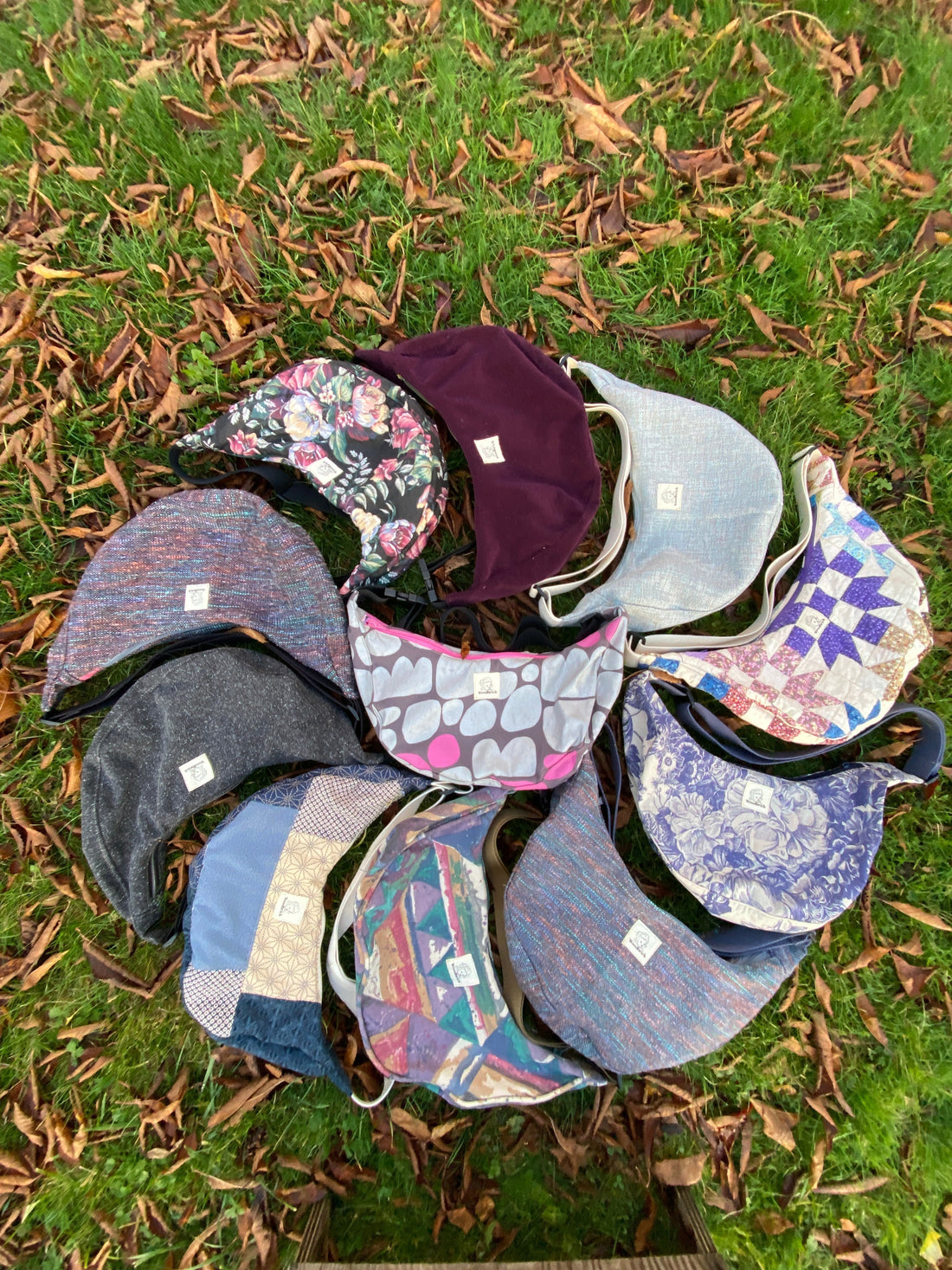
Crescent Bags: Big, Little, and Other Inspirations
Emily PeltierShare
The humble crescent bag is a true chameleon, continually reinvented through the decades. Variations of the modern “crescent bag” have appeared in many forms across generations. Slouchy crossbody “hobo bags” date back as early as the 1930s, gained strong cultural relevance in the hippie-driven ’70s, and saw a major resurgence in the late ’90s and early 2000s.
Today, the crescent bag is once again in the spotlight—this time in sporty manmade materials with nylon straps, reimagined by nearly every mid- to large-scale brand over the past three years. It’s no secret that Woodbrick crescents draw from this wildly popular silhouette. Inspired by the trends of fast fashion, I aim to “hide in plain sight” by creating pieces that people already want—but from a sustainable standpoint.
The pattern I use for both my classic crescent bag and the slightly smaller “mini” version is based on the Crosstown Crescent Bag by Canadian independent sewer and Etsy seller Gracomakes. Thanks to the generous permission of Grace, I’m able to produce and sell bags made from her pattern. I’ve learned so much from working with this design—tweaking and experimenting to create a variety of unique variations. From strap systems to sizing, from flat bottoms to curves, the crescent shape has been an inspiring foundation for endless ideas.
The variety of textiles, strap materials, and added details means no two Crescent bags are exactly alike. The classic design features a wide 1.5” strap that typically extends up to 45” — often even longer. Sporty buckles are commonly paired with more technical fabrics, such as those used in the waterproof versions.
Each classic Crescent includes an interior zippered pocket to keep valuables secure and easily accessible. Spacious yet compact, it comfortably fits daily essentials along with a 500ml water bottle, a packable hat, or a small book. Clip a leash or keychain to the crossbody strap, or let it double as a perch for a toddler — the sturdy, curved shape holds up beautifully in real-life use.
Aside from the classic, most common variation is the “mini.” Though it’s only about 20% smaller than the classic—so not truly “mini”—it features a 13” zipper opening (down from the classic 16”), making it better suited for just the essentials, rather than everything and more. One key difference is the inclusion of a buckle or clasp on all mini bags, improving ease of use when worn snugly against the body.
From here, the Crescents evolve — into messenger bags, shoulder bags of all sizes, and even mini keychains — each one a playful reimagining of the original form. No matter the size or function, every piece is crafted as a one-of-a-kind composition. By combining repurposed textiles, reclaimed hardware, and handmade details, each bag reflects Woodbrick’s dedication to thoughtful, sustainable design.
These aren’t just accessories — they’re, functional works of art that celebrate reuse, creativity, and individuality. In every stitch and scrap, you’ll find a commitment to reducing waste and reimagining what’s possible with what already exists.

